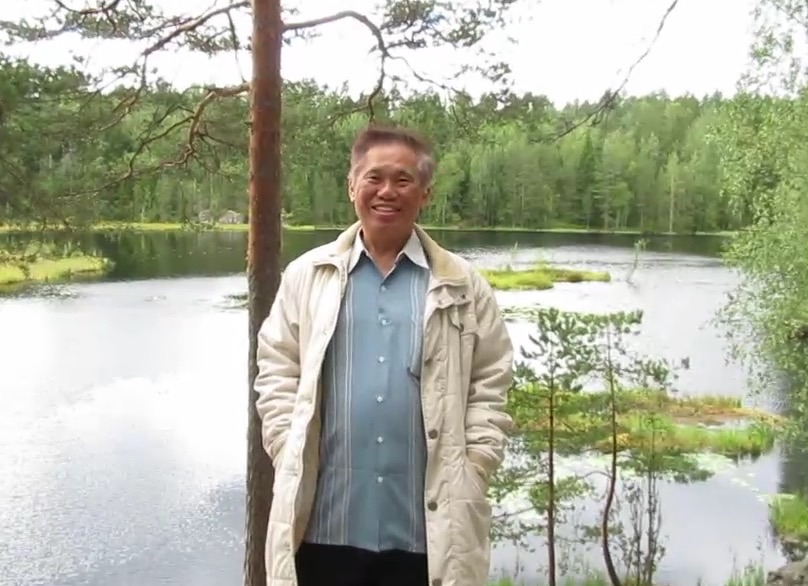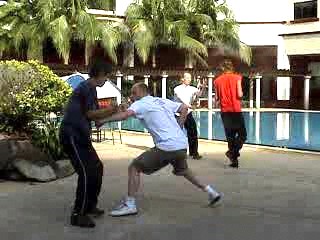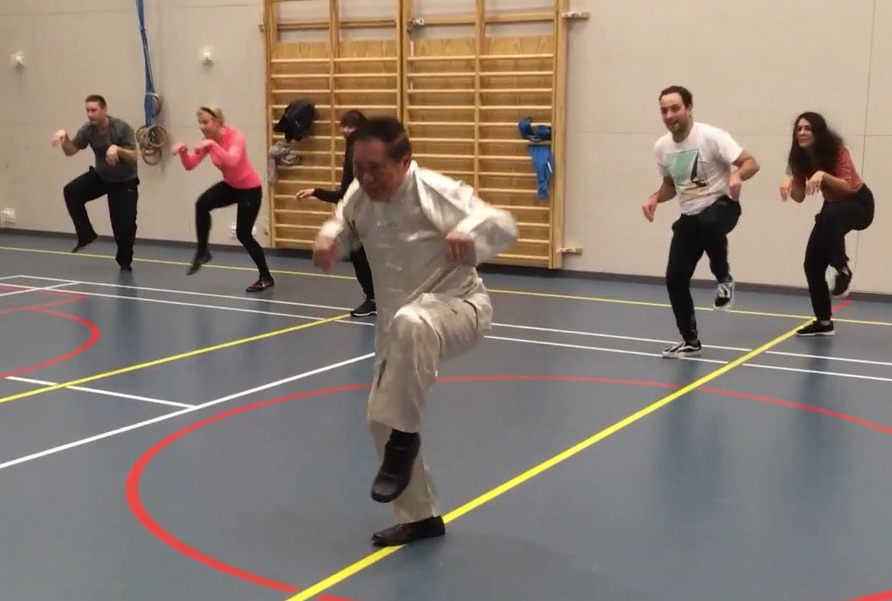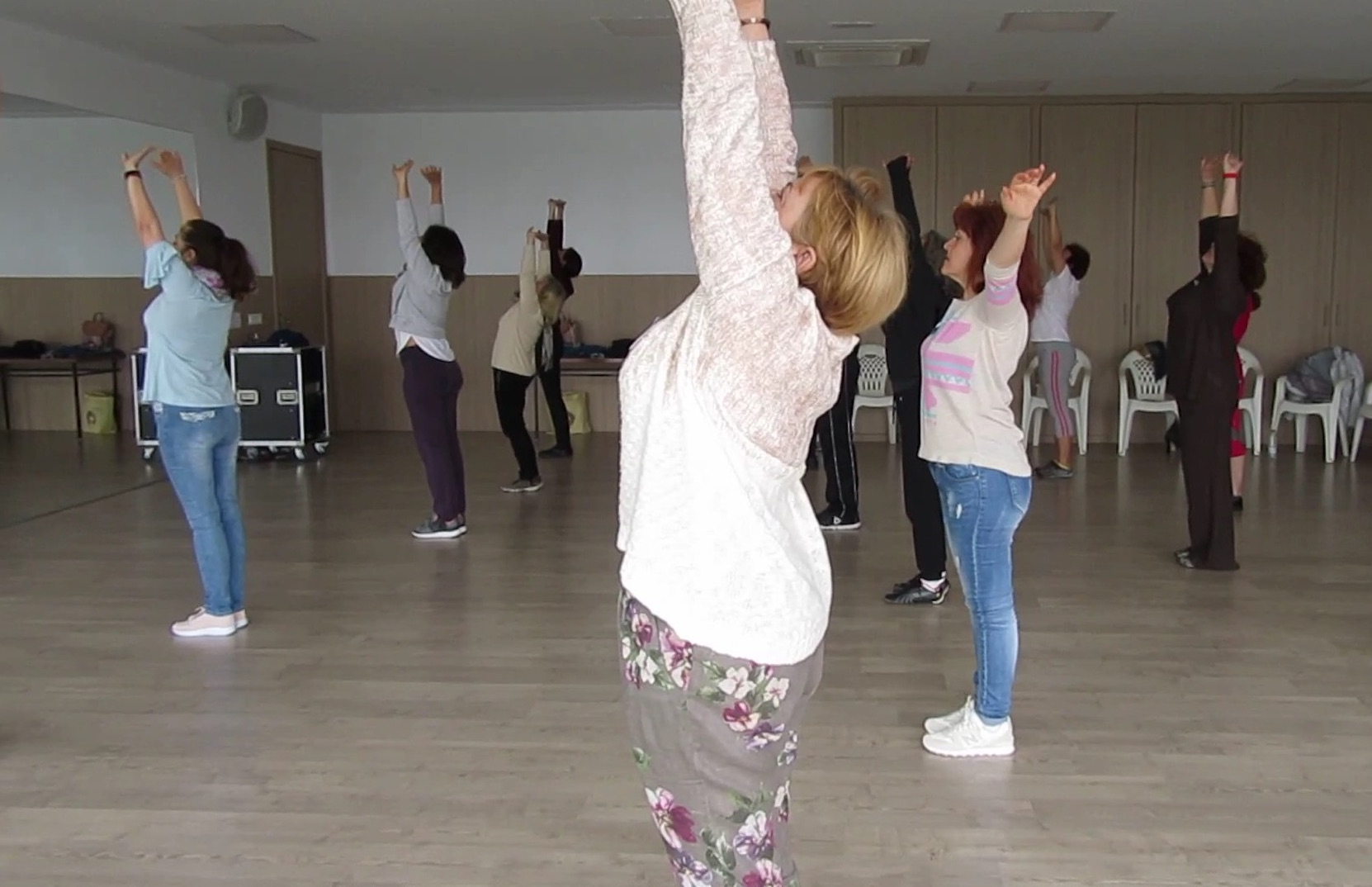SELECTION OF QUESTIONS AND ANSWERS
JULY 2021 PART 1

"Being accomplished in the Shaolin arts is better than changing stones to gold by touch"
Question 1
What would be the main reasons for not doing classes online, and what would be the detrimental effects of the arts being taught?
— James, England
Answer
The main reason why I am not in favour of online teaching is that it may change a wonderful art like chi kung or kungfu (spelt as "qigong" or "gongfu" in Romanized Chinese) into chi kung dance or kungfu gymnastics.
The detrimental effects of the chi kung being taught are that it becomes gentle, physical exercise, and would not add to practitioners' health, vitality and longevity. If they are of good health, have vitality and enjoy longevity, it is because of other reasons, not because of the chi kung they practice. They may also train wrongly or over-train.
The detrimental effects of kungfu are that it becomes "flowery fists and embroidery kicks" or kungfu forms for demonstration but useless for combat. Significantly, but unknown to many people, modern wushu practitioners suffer from knee and back problems. They cannot perform after middle age. They may also train wrongly or over-train.
In line with my world travel, you may like to know the saying that "being accomplished in the Shaolin arts is better than changing stones to gold by touch". Our chi kung and kungfu (including Taijiquan) come from Shaolin. That was actually why I started Shaolin Wahnam Institute, and why I travelled widely.
Question 2
Are you aware of kungfu or any type of martial art on Wudang Mountain prior to Zhang San Feng?
— Sifu Angel Perez, Shaolin Wahnam Puerto Rico
Answer
I am not aware of kungfu or any martial art on the Wudang Mountain prior to Zhang San Feng. There could be some, like Huashan Kungfu or Kunlun Kungfu which are now no longer practiced.
But a few centuries later in the Qing Dynasty, Fong Tou Tuck, who was the fourth of the Shaolin Elders, initiated Shaolin Kungfu on the Wudang Mountain. It mainly used the phoenix-eye fist, like Pak Mei whom he sided in the burning of the Shaolin Monastery.
It was later called Wudang Kungfu. It often confuses with the one initiated by Zhang San Feng. The Wudang Kungfu of Fong Tou Tuck was relatively "hard", whereas that of Zhang San Feng was "soft", and later branched into different styles of Taijiquan.

Leading Opponent to Futility
Question 3
I've been reviewing some of the Kung Fu tactics. There's one in English which Sifu has mentioned several times which is "lead the opponent to futility". There is a similar saying, which is "first neutralize, then counter".
Are these two the same? Also, is the Chinese for one or both of these "xian hua hou ji"?
— Sifu Mark Blohm, Shaolin Wahnam Taiwan
Answer
"Lead opponent to futility" (or "yin di luo kong") and "first neutralize then strike" (or "xian hua hou ji") are quite different.
"Xian hua hou ji" is "first neutralize then strike". An exponent usually "neutralizes" by warding off, like using "Single Tiger Emerges from Cave". He can also neutraulize by moving back or dodging, with or without moving his legs. In this case, he uses "lead opponent to futility" then strikes the opponent.
"Lead opponent to fultility" and "first neutralize then strike" are principles. Both principles can be used in combat sequences.
In "lead opponent to futility", you let your opponent's attack be empty. For example, when an opponent strikes, you move your front Bow-Arrow Stance to a False-Leg Stance. You may use your tiger-claw to ward off, as in Shaolin Basic Combat Sequence 1, but even if you do not use the tiger-claw, the opponent cannot reach you.
A better way is to use body-movement. You shift your body backward without moving your legs. After brushing off the strike hand of your opponent, you shift your body forward to counter-strike.
In "first neutralize then strike", you first neutralize your opponent's strike, then you counter-strike him, as in Shaolin Basic Combat Sequence 1. Shaolin Basic Combat Sequence 1 is a combat sequence. We use Shaolin Combat Sequence 1 for the principle of "first neutralize then strike".
There are three main levels of combat, namely "first neutralize then strike", "defence-cum-attack", and "without defence direct attack". If you use "Black Tiger Emerges from Cave" followed by "Black Tiger Steals Heart", you use the principle of "first neutralize then strike". If you brush aside an opponent's attack with one palm, and strike him with the other palm, as in "Single Dragon Shoots Pearl", you use the principle of "defence-cum-counter". If you move aside as your opponent attacks, and counter with "Dark Phoenix Nods Head", striking the opponent's side-rib, you use the principle of "without defence direct attack".
"Without defence direct attack" is a misnomer. Moving aside as your opponent attacks is a defence, using the principle of "lead opponent to futility". Simultaneously, you strike your opponent with a phoenix-fist or any form of attack.
We have "without defence direct attack" in Shaolin Basic Combat Sequence 3. Moving the stance from Bow-Arrow to a sideway False-Leg Stance, using the principle of "lead opponent to futility", and simultaneously striking the opponent's elbow or wrist with a hand-sweep is an attack. Many practitioners, however, block the opponent's attack instead of striking the opponent.
One may ask whether a practitioner can do away with "first neutralize then strike", and focus on "without defence direct counter". There are three good reasons why "first neutralize then strike" is important.
Firstly, it is a natural progression. First we learn "first neutralize then strike." Then we learn "defence-cum-counter". When we are good, we can use "without defence direct counter".
Secondly, even when we are good at "without defence direct counter", we may still want to use "first neutralize then strike", if we want to test or scout our opponent.
Thirdly, a good opponent may change his way of combat mid-way. If you use "without defence direct counter", your good opponent may follow through to strike you.
Not only you neutralize your opponent, you make sure that your opponent has no chance to hit you. "Safety first" is the first principle in kungfu, not "winning at all cost". We rather come out of combat without any injury rather than hitting our opponent.
In Chinese, "lead opponent to futility" is "yin di luo kong".
Question 4
I started a practice online since a week ago. People started feeling strong blockages unblocked in their bodies. It is extraordinary, with deep cleanse, and a lot of energy. How is it possible?
Some students have strong pain in different places. I am not sure how to help them. Can you please give me your advice and guidance?
— Sifu Kenya Araujo, Shaolin Wahnam Ecaudor
Answer
Medical chi kung, which people now need, is the lowest type of chi kung in Shaolin Wahnam. But what is "low" to us can be "high" to other people, because most people just practice gentle physical exercise.
The students with strong pain have to wait until you start your regular class. Practicing chi kung is not just an ad hoc measure; it is a way of life.
Having pain in different places is when there is blockage and chi, or energy, is attempting to push through. You should teach "Lifting the Sky" or "Carrying the Moon", and the students have to endure the pain. They cannot just push through; they have to make chi kung a way of life.

18 Felling Tecniques of the Spiritual Monkey
Question 5
I remember at the Glory of Shaolin Winter Camp course in Finland, we learned the Monkey set. We also learned how to apply the five elements or Wu Xing of the Monkey set and their different characteristics.
— Miguel, Netherland
Answer
My sifu, Sifu Ho Fatt Nam, was a Monkey specialist. He learned the Monkey set from the Monkey God himself in dreams. He only demonstrated the set once. His very good friend who had been with him for a long time, told me that that was the only time he saw the set demonstrated. I did not learn the Monkey set from Sifu Ho Fatt Nam, but he showed me some characteristic applications.
Another Monkey specialist was Four-Eye Cheong, which was his nickname. It was during the time of Uncle Righteousness. He asked Uncle Righteousness whether he could teach me his favorite Monkey set, and Uncle Righteousness agreed.
Four-Eye Cheong taught me Double Sabres to see if I was suitable to learn the Monkey set. I did badly in the Double Sabres because of a negative influence. In Uncle Righteousness' lineage there was a set of Butterfly Knives called Cross-Road Double Southern Knives. The knives were used together, but in Double Sabres the sabres were used one after another.
Later I learned from Sifu Choe Hoong Choy, the patriarch of Wing Choon Kungfu, a set of Butterfly Knives called Human-Character Double Southern Knives, where the knives were used one after another. Because of the Butterfly Knives, I was able to use the Double Stables.
But I did not learn the Monkey set from Four-Eye Cheong. Later I learned it from his selected disciple. Four-Eye Choeng's Monkey set is called "18 Felling Tecniques of the Spiritual Monkey". Sifu Ho Fatt Nam's Monkey set is just called "Monkey Set", though it is linked with 5 elemental processes or "wu-xing". I combined the two sets into one and taught it at the Winter Camp in Finland in January 2018, naming it the "Five-Monkey Eighteen Felling Technique Set".
The five elementary processes of the Monkey set are metal, which symbolizes being sonorous; water, which symbolizes flowing; wood, which symbolizes growth; fire, which symbolizes aggressiveness; and earth, which symbolizes coming together.
The 18 felling techniques are as follows:
1. Spiritual Monkey Tests Cave.
2. Reverse Kicking of Purple Bell.
3. Spiritual Monkey Brushes Leaves.
4. Naughty Monkey Crawls on Ground.
5. Searching Curiously in Surprise.
6. Light-Footed Monkey.
7. Happily Pluck Fruit.
8. Hide Peach in Arm Pit.
9. Old Monkey Looks at Mountain.
10. Sweep Leaves Search Food.
11. High Mountain Avoid Tiger.
12. Naughty Monkey Kicks at Tree.
13. On Ground Listen to Wind.
14. Scissors Kick.
15. Golden Monkey Plucks Fruit.
16. Black Ape Shows Rage.
17. Black Ape Smashes Tree.
18. Great Sage Looks at Way.
Question 6
I would assume that if the eight trigrams do have kungfu applications, the Shaolin Pakua set is perfect for expressing the eight characteristics of the Bagua.
Answer
The eight trigrams from the I Ching, or Yi Jing in Romanized Chinese, are "qian", "kun", "kan", "li", "xun", "zhen", "dui" and "gen". They represent "heaven", "earth", "water", "fire", "wind", "thunder", "lake" and "mountain".
There is, however, no direct relationship between kungfu applications and the eight trigrams. In other words, if a kungfu exponent knows his application well, he can apply his Shaolin Pakua Set or his Baguazhang even if he does not know the eight trigrams.

Lifting the Sky
Question 7
Do you have any advice for people, who have to stay at home at the moment?
— Sifu Leonard Lackinger, Shaolin Wahnam Wien
Editorial Note: This question was asked in early 2020 when the world was facing a pandemic, but the question is released now.
Answer
We are very different. We are healthy, full of vitality, have longevity, peak performance and spiritual joys irrespective of religion, but other people do not have these wonderful benefits. These benefits are the results of regularly practicing chi kung, and in your case kungfu.
I haven't been sick for more than 50 years. I am sure you too and others who practice genuine, high-level chi kung have these wonderful benefits. In this time of world pandemic, practicing genuine, high-level chi kung is a very good protection against any disease, and we will also not be carriers of any virus.
But genuine chi kung is very rare today. Most people only practice outward chi kung forms, and they don't realize it. Because of the high-level of our chi kung, we need to practice only about 10 minutes a day, but practicing twice a day is preferable. Other practitioners have to practice for an hour, and they remain weak and sickly.
People who have to stay at home because of the world pandemic, can do many things at home which they think they don't have time to do. For me, as today is the start of a lockdown in Sungai Petani when I can't get out of town, I play with my computer, read books and spend time with my wife. Of course I also spend time practicing my chi kung and kungfu. I wake up very early and sleep late at night, and I am full of vitality even at 75. Everyday is my birthday.
Question 8
Are there any specific exercises to overcome sleeping problems, except practicing "Lifting the Sky" while lying in bed? Is sleeping related to any of the organ systems?
Answer
For us we naturally sleep less, and thus have more time to do other things.
Let the habit come naturally. A normal person needs about eight hours of sleep. Children will need more, as sleeping is very important for growth. Later, as one practices genuine chi kung, he may need only about 5 or 6 hours.
"Lifting the Sky" is a wonderful exercise to overcome sleeping problems. "Lifting the Sky" is to help us relax, physically and mentally. Once we can relax, sleeping comes spontaneously. We can perform other exercises if we want to. These exercises help us to relax physically and mentally.
You can perform other chi kung exercises to help you relax physically and mentally, like "Carrying the Moon" and "Pushing Mountain". If you use "Carring the Moon" it is not necessay to bend your body. Exercises that add a lot of internal force are not suitable.
Those who practice genuine chi kung do not have any sleeping problems. I sleep in more than a hundred different beds in my world travels, and I sleep like a baby.
Sleeping relates to the organs and other systems. It enables the organs to rest, but they don't stop working immediately.
LINKS
Selected Reading
- The Various Eighteen-Lohan Arts
- Evolution of Shaolin Kungfu to Taijiquan
- Can Kungfu be Used for Fighting?
- Feelings from the Heart
- Paying Homage to the Gods
